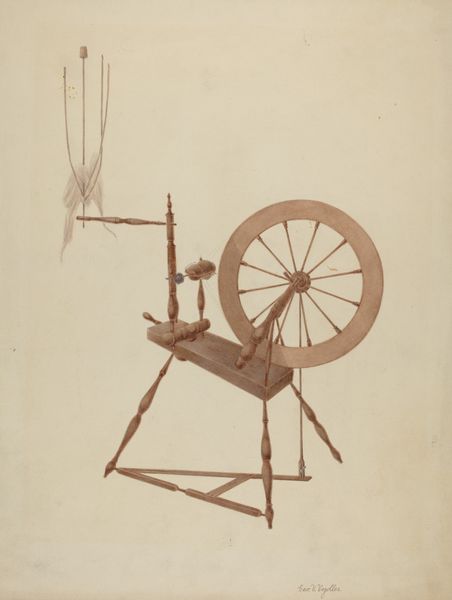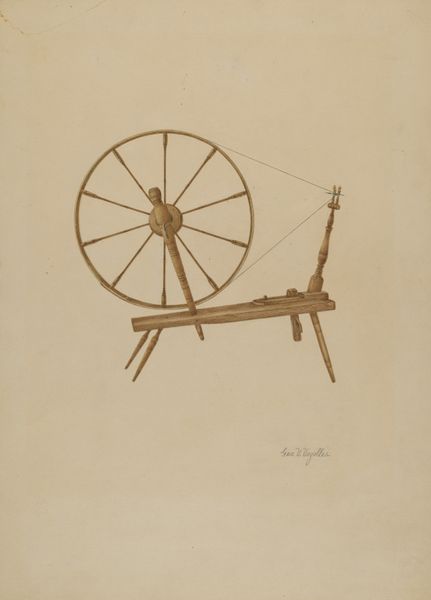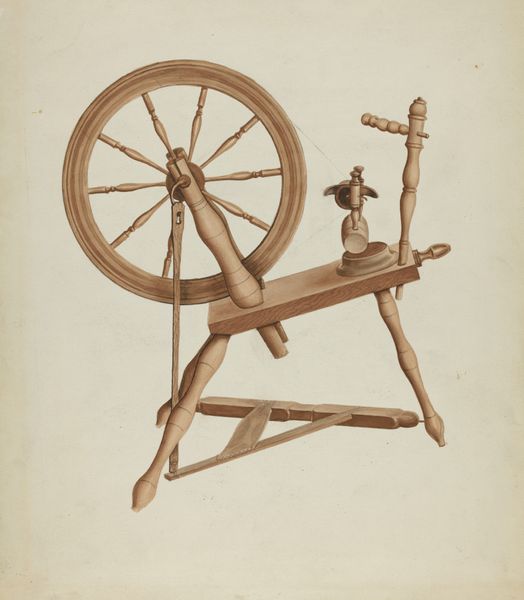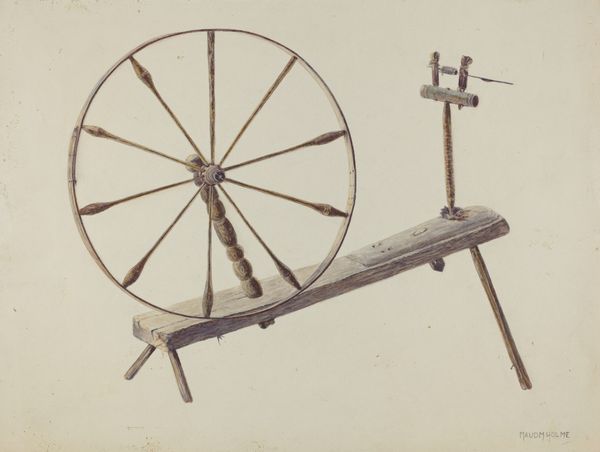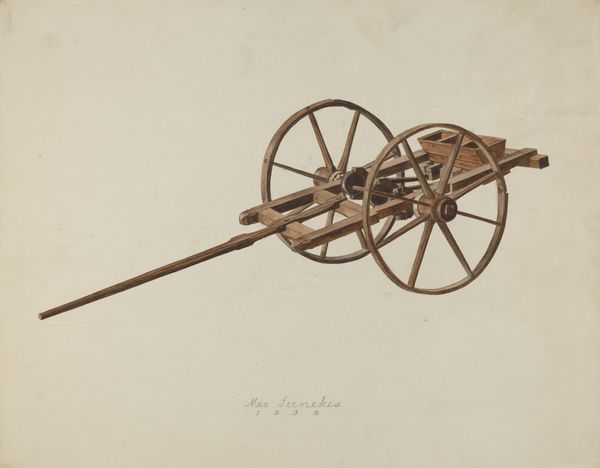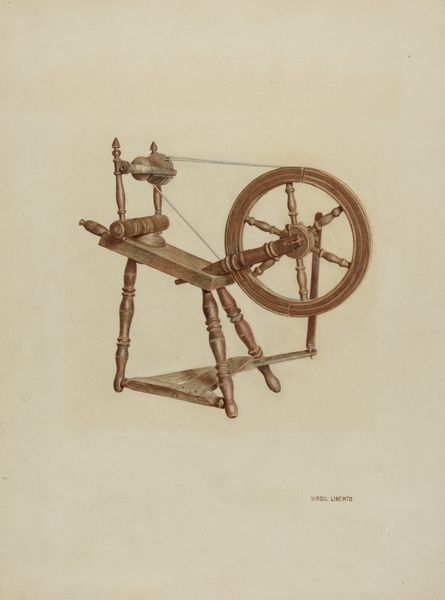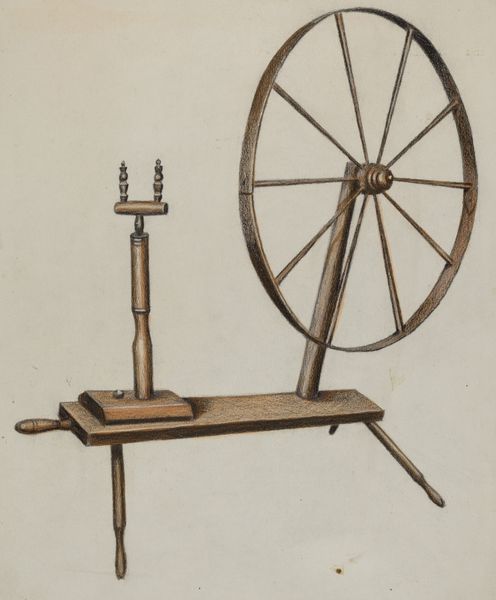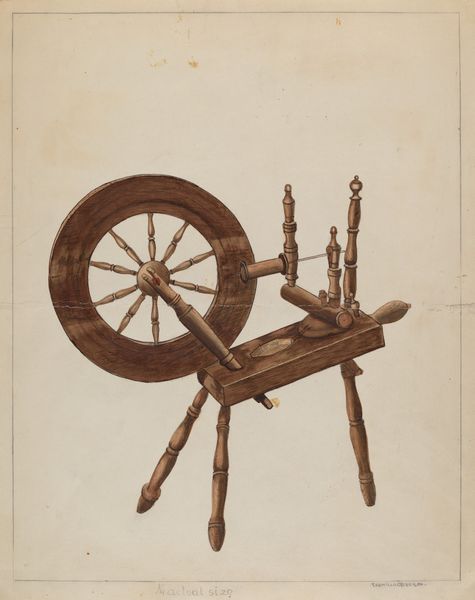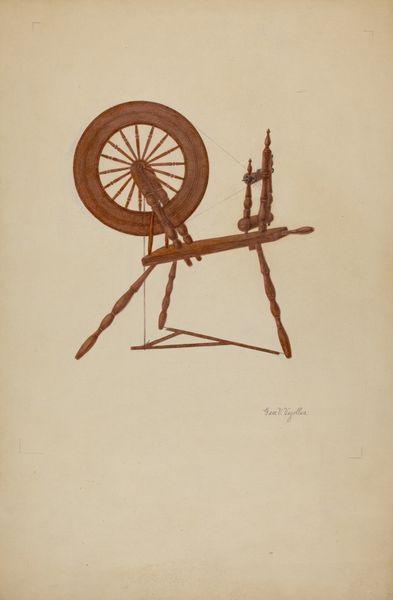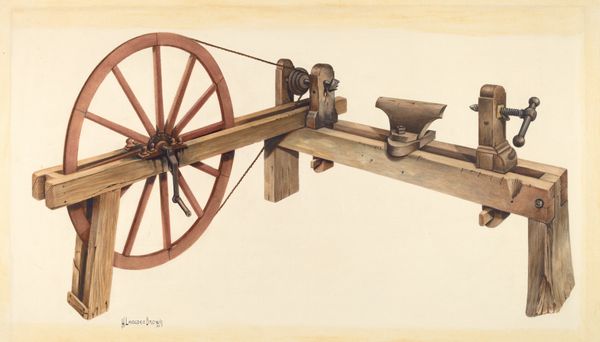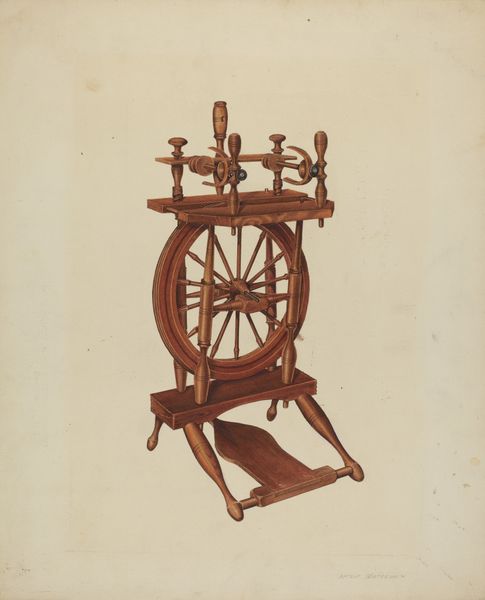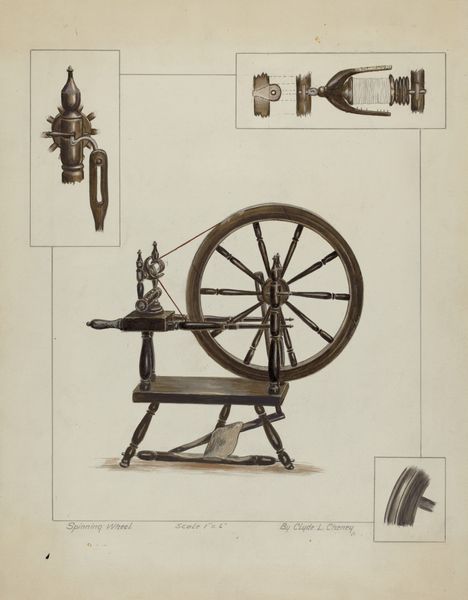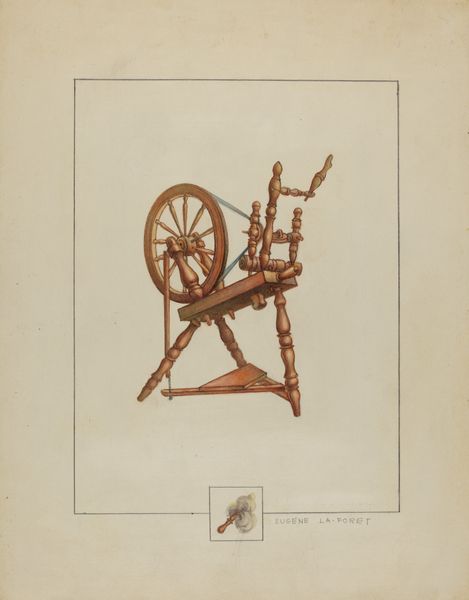
drawing, watercolor
#
drawing
#
watercolor
#
geometric
#
modernism
#
watercolor
#
realism
Dimensions: overall: 55.4 x 46 cm (21 13/16 x 18 1/8 in.)
Copyright: National Gallery of Art: CC0 1.0
Curator: Here we have Oscar Bluhme’s 1941 watercolor and pencil drawing, *Spinning Wheel*. What jumps out at you? Editor: The stillness. It’s an image of potential energy. The wheel is just waiting for a foot to set it in motion and bring this machine to life. Curator: Exactly! It is the essence of pause, the anticipation before creation. I mean, think of the countless hours of yarn, cloth, and perhaps stories that have spun out of such contraptions. What formal aspects contribute to that stillness you observed? Editor: The relatively neutral palette keeps things calm and considered. It lacks contrast or dynamic variation and instead stays consistent throughout. Notice how Bluhme rendered this machine against an essentially blank background? It focuses the viewer, and elevates it… Curator: Almost enshrining the spinning wheel as a symbol. Consider its geometry, how the circles, the strong lines, form this harmonious object—a convergence of function and beauty! Do you feel any symbolism at play? Beyond just the rendering of the object itself. Editor: Certainly! There is an implied commentary here about craft and industry and labor in the context of the modern world—its presence perhaps intimates that we have begun losing a connection with objects that require dedicated skilled use. Curator: Precisely! It captures the tension of that transitional period, acknowledging traditional skills while facing a changing industrial world. How can you read its impact through semiotics? Editor: Aesthetically the spinning wheel serves almost as a logo of ingenuity. Its form promises warmth, safety and utility. Each material, color, and construction technique signifies the slow processes that are anachronistic for its context in modernity. I see Bluhme embracing tradition and looking at how industrialism transformed creative expression. Curator: An important point to consider, absolutely. Ultimately, I believe Bluhme offers us not just a portrait of a tool, but an invitation to ponder the values we weave into our lives, intentionally or not. Editor: A beautiful synthesis! Indeed, the image lingers in the mind as more than a static object—it echoes with the rhythm of creation.
Comments
No comments
Be the first to comment and join the conversation on the ultimate creative platform.
